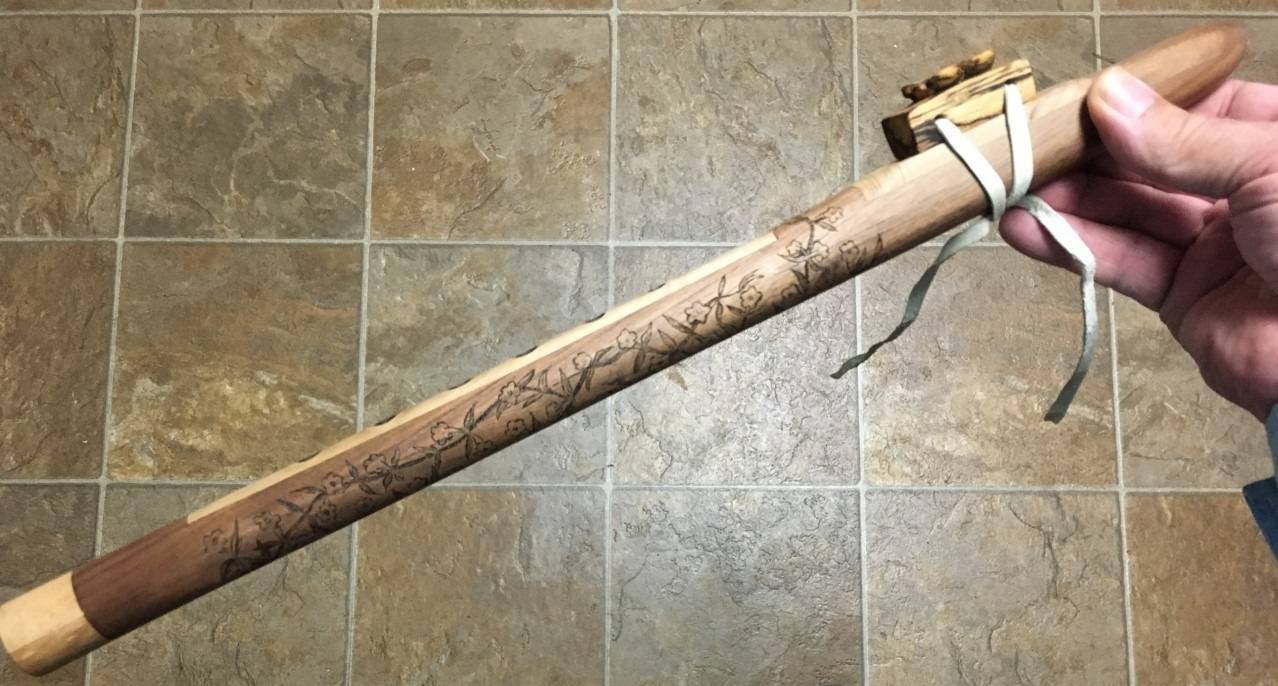The recent discussion of playing music while paddling got me wondering if others carry musical instruments with them while paddling. In my extended paddling family Rusty sometimes brings his guitar. If I could play a harmonica I would certainly carry one with me. Drumming on the side of a kayak or canoe is certainly an option. Of course everyone has a voice, and singing is the simplest way to bring music along wherever you go. If I sing I have been told I should be on the radio so they can turn it off.
My choice of instrument is the Native American Flute. It is easily portable, and doesn’t require an in depth period of learning to sound good playing it. I was first drawn to it because I love the sound. Like tjalmy said in the thread that lead to this post “It seems fitting in a sylvan environment. Lovely gentle wooden instrument, very organic.” It became a passion for me which has greatly expanded exploring many tributaries of creative meandering for me. It gave me a musical means of expression I never really had. I drifted into making my own songs as well as learning others. I learned how to make the flute which renewed a dormant interest in carving. I have always dabbled with drawing, and wood burning became a new way for doing so. Unlike many instruments it can vary in form and be uniquely individual. I am posting some of the flutes I have made as a demonstration of this unique quality.
























